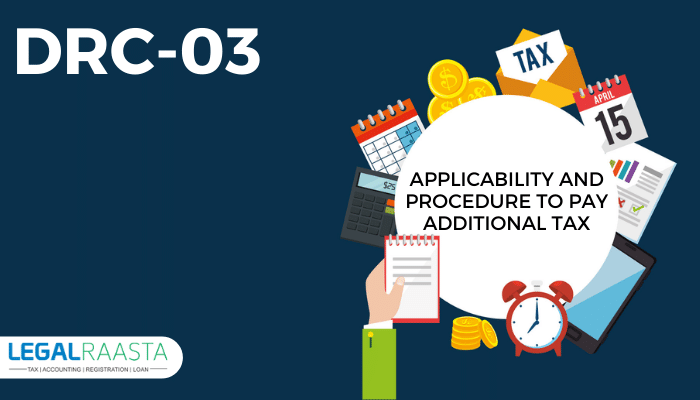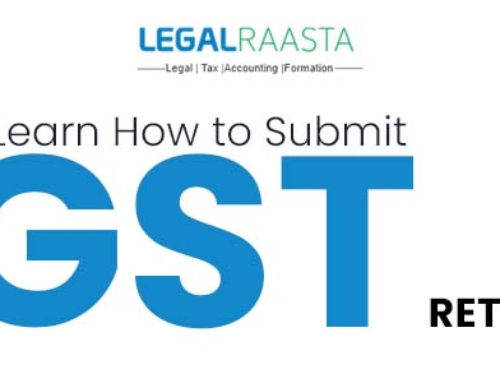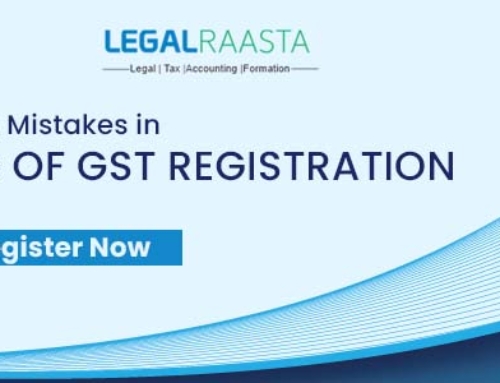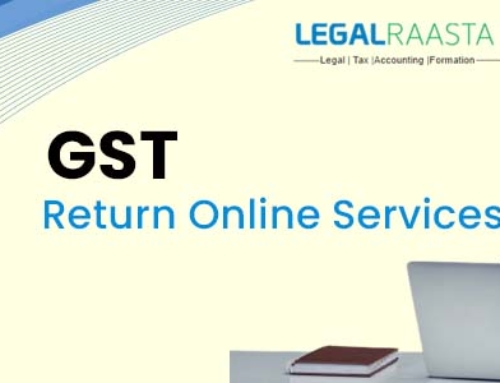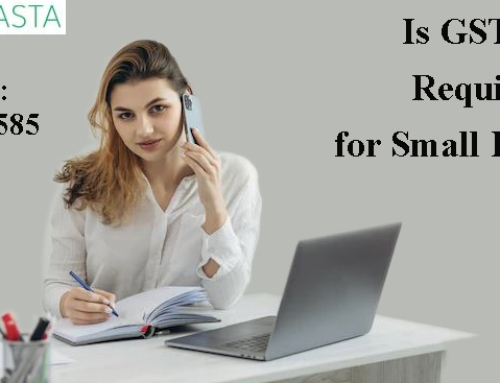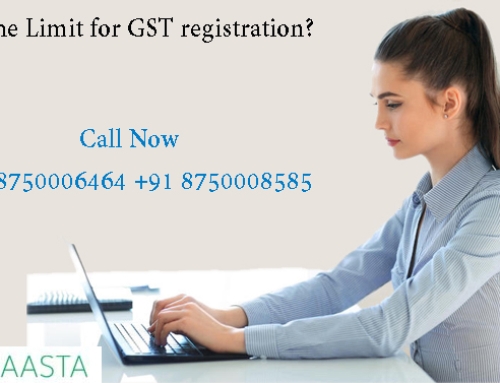DRC-03 is a form required by the GST law to be filed for voluntary tax payments made in response to a demand or tax deficiency discovered after the deadline for filing returns for a financial year has passed. This form is covered under CGST Rule 142(2) and (3).
The article goes overall you need to know about the DRC-03 form and how to register it on the government’s GST system.
Recent Updates on Audit under GST and DRC-03
Contents
28th May 2021
According to the outcome of the 43rd GST Council meeting, GSTR-9 would remain optional for taxpayers with a turnover of up to Rs.2 crore, while GSTR-9C will be self-certified by taxpayers with a turnover of less than or equal to Rs.5 crore starting in FY 2020-21.
1st February 2021
Union Budget 2021:
The GST law no longer requires certain specialists such as CAs and CMAs to conduct GST audits. Sections 35 and 44 were changed as a result of this. The revision eliminates the necessity for taxpayers to file GSTR-9 annual returns on a self-certification basis on the GST site, therefore eliminating the need for a GSTR-9C reconciliation statement.
The administration has yet to specify the fiscal year in which this elimination would take effect, as well as the day on which it will take effect. It’s worth noting that the GSTR-9C submission for FY 2019-20 hasn’t changed.
What is form DRC-03?
DRC-03 is a voluntary tax payment form that allows a taxpayer to pay their tax by voluntarily increasing their responsibility or responding to a show-cause notice (SCN) issued by the GST department.
When should a taxpayer make payment in DRC-03?
The reasons for making a payment under DRC-03 are as follows:
- Audit/Reconciliation Statement: When a GST auditor discovers a case of underpayment of tax, interest or penalties, or an excess claim of input tax credit for the financial year under audit, and the time limit to declare it in GST returns has passed, the taxpayer must make a voluntary payment in DRC-03 and report it in GSTR-9. It should also be reported in GSTR-9C by the GST auditor.
- Investigation & Others: If a taxpayer is under investigation and it is discovered throughout the course of the investigation that the taxpayer has failed on tax payments, he may make a voluntary payment in DRC-03.
- Annual Return: Before preparing and filing yearly returns, the taxpayer must reconcile his or her accounts for the entire year. During this reconciliation, any short payments of taxes, interest, or penalties due to non-reporting or under-reporting of taxable supply may be discovered for the first time. Taxpayers have the option of paying any tax disparities in cash and reporting them on Form DRC-03.
- Demand or in response to show cause notice: In response to a show-cause notice, the taxpayer has the option of paying the tax required, plus interest, utilizing DRC-03, but only within 30 days of the date of the issue noted in the show-cause notice.
Form DRC-03 is used to make a voluntary payment of outstanding liabilities under the CGST Act’s Sections 73 and 74. To avoid the inconveniences of demand and recovery procedures, a taxpayer can self-determine the tax before SCN issuance or within 30 days following SCN determination.
Section 73 – deals with incidents of tax non-payment or underpayment without any intent or invocation of fraud.
Section 74 – deals with cases of tax evasion or underpayment with the intent or invocation of fraud.
- Liability Mismatch – GSTR-1 to GSTR-3B: In February 2021, the GST portal included this option when selecting the reason for using the DRC-03 form. If the tax authorities have sent a notice for differences, such as a tax liability shortfall in GSTR-3B as compared to GSTR-1, the taxpayer must pay the difference in DRC-03 or respond with a justification.
- ITC Mismatch – GSTR-2A/2B to GSTR-3B: In February 2021, the GST site included this as an option for specifying the reason when paying tax in DRC-03. The tax authorities may send the notification for excess Input Tax Credit (ITC) claims in GSTR-3B when compared to GSTR-2B (by more than allowed under CGST Rule 36(4) of 5% of ITC in GSTR-2B). When depositing excess ITC claims, the taxpayer must utilise this form.
Point to note: All payments must be made with either input tax credits or cash balances from the electronic credit ledger or the electronic cash ledger. However, the ITC cannot be used in the case of interest and penalties. It must be paid in full and in cash.
Prerequisites before filing DRC-03
Form DRC-03 is used to make a tax payment voluntarily. Payment can be made either voluntarily or involuntarily:
- Prior to the issue of a show-cause order
- Within 30 days of the SCN being issued, if the show cause notice has already been issued.
Steps to file DRC-03
Step 1: Login and go to the User Services section.
Go to ‘My Applications’ under ‘User Services’ after logging into the GST Portal.
Step 2: Select one of the three scenarios in which a taxpayer must make a payment:
Case 1: A taxpayer who has not paid and does not have a Payment Reference Number has not made any payments (PRN).
Case 2: A taxpayer has generated PRN but has not used it, and he or she requests payment within 30 minutes of the PRN being generated.
Case 3: A taxpayer generates PRN but does not use it, and the taxpayer requests payment 30 minutes after the PRN is generated.
Steps to be performed for Case 1
Step (a) Select ‘Intimation of Voluntary Payment – DRC-03’ as the Application Type, and then click ‘New Application.’
Step (b) Whether a taxpayer pays voluntarily or against SCN, he or she will have two options:
- Voluntary payment: The payment date will be auto-populated and there will be no way to change it.
- Payment by SCN: A taxpayer must manually enter the SCN Number and choose an issue date that is within 30 days of the payment date.
Note: An application for voluntary payment intimation can be saved at any stage of completion for a maximum of 15 days. The saved draught will be removed from the GST database if it is not filed within 15 days.
Navigate to Services > User Services > My Stored Applications to see your saved application.
Step (c) Select the Section for which payment is being made, the Financial Year, and then the overall tax period’s from and to dates.
Step (d) Include payment information, including interest and penalties. By clicking on ‘Add,’ a taxpayer can add further information. Then click ‘Continue To Pay.’
Step (e) A voluntary payment page will appear, separated into three sections:
(1) Liability Details: This table shows the liabilities.
(2) Cash Ledger Balance: This table shows the cash balance available on a specific date. The amount of cash to be paid from the available balance against outstanding liabilities must be entered by the taxpayer.
(3) Credit Ledger Balance: This table shows the ITC available as of the current date. The taxpayer must input the amount of the ITC-payable liability and then select Set-Off.
Step (f) A confirmation message will appear, giving the amount of cash and ITC that was used to make the payment. A PRN will be created along with a successful payment message when you click ‘Ok.’
Note: If PRN isn’t available, it can be found under Services>Ledgers>Electronic Liability Register in the ‘Electronic Liability Register.’
Taking the first step (g) To see the draught DRC-03, go to the page titled “Intimation of payment given voluntarily or against SCN” and click the “Preview” option.
Taking the first step (h) If you have any justifications, provide them in the area provided. To upload a file, go to the attachments section and select one. Select the ‘Authorised Signatory’ and enter the ‘Place’ after checking the verification box.
Taking the first step (i) Select ‘File’ from the drop-down menu. There will be two choices:
- Upload to DSC: Browse the certificate and click the ‘sign’ button.
- File with EVC: An OTP will be given to the mobile number and email address on file. When the OTP is validated, a success message is sent along with the ARN.
Steps to be performed for Case 2
Step (a) Follow the processes in Case 1 until the taxpayer reaches the Intimation of voluntary payment page or the SCN page.
Step (b) For the option – Have you made payment?, choose ‘Yes’ and enter the PRN.
Step (c) You’ll see a link that says “Get payment details.” When the taxpayer clicks on it, the information will be auto-populated based on the payment that was made.
Step (d) Select ‘Preview’ to view draught DRC-03, then file the application using the identical procedures as in Case 1.
Steps to be performed for Case 3
Step (a) Follow the processes in Case 1 until the taxpayer reaches the Intimation of voluntary payment page or the SCN page.
Step (b) Check the box next to Have you made a payment? and then type in the PRN.
Step (c) You’ll see a link that says “Get payment details.” Because the details will not be auto-populated as in Case 2, click on the link and enter the information. This occurs because the 30-minute time limit has expired.
Note: The processing will take place in the back end, where the system will compare the amount entered by the taxpayer to the payment received. The intimation form will be accepted if the answer is affirmative. If you don’t, an error notice will appear.
Taking the first step (d) After that, file the application DRC-03 using the identical procedures as in Case 1.
Note: If the PRN has already been used in Cases 2 and 3, an error message will appear, instructing the taxpayer to enter the PRN that has not yet been used.
Where to report cash payments in GST returns?
Cash payments are recorded in the following ways in various GST returns:
| GST Return/Application | Electronic Cash Ledger |
| GSTR-3B (Monthly Return) | An e-wallet is an electronic cash ledger. This ledger keeps track of all cash and bank payments. A taxpayer’s ITC balance can be used to pay tax liabilities first. If the liabilities exceed the ITC amount, the difference must be paid in cash. |
| GSTR-9 (Annually) | If you didn’t pay your tax bill when you filed GSTR-3B, you’ll have to pay it when you file GSTR-9. Payment of outstanding liabilities is made using the available balance in the electronic cash ledger. If the liabilities exceed the available cash amount, a challan for making further cash payments must be created. |
| In case of demand notices | Payment can be made using ITC and cash available in the Cash Ledger in the event of demand notice. By creating an additional cash challan, the remaining liability must be paid in cash. Interest and penalties must be paid in full in cash. A proper officer will issue an acknowledgement in Form DRC-04 for the payment made in Form DRC-03, and the officer will then issue an order in Form DRC-05 to conclude the proceedings. |
What happens after filing DRC-03?
The status of the submission will be changed to “Pending Tax Officer Approval.”
The taxpayer receives an acknowledgment in the form GST DRC-04 from the tax officer (Acknowledgement of Acceptance of voluntary payment).
There are no restrictions on a taxpayer making another voluntary contribution while the tax officer’s acknowledgment is still pending.
Frequently Asked Questions on DRC-03
When can one pay tax voluntarily under GST?
Before receiving a notification under Provisions 73 or 74 of the CGST Act, 2017, or within thirty days after receiving a show-cause notice (SCN) under those sections, one can make a voluntary payment of tax. After thirty days from the date of SCN issuance, there is no way to make a voluntary payment.
Are there any prerequisites for making voluntary payment of tax?
The following are the requirements for making a voluntary payment:
(a) A show-cause notice determining the tax must not have been issued if the tax is paid voluntarily before the SCN is issued.
(b) If the voluntary payment of tax is made after the issuing of the SCN or statement, the thirty-day time limit must not have expired after the issue of the SCN or statement.
Is partial payment against a liability raised in an SCN allowed?
The taxpayer is not allowed to make partial payments on a liability that was raised in the show-cause notice. Making partial payments is not even an option on the GST system.
Can I save the application for intimation of voluntary payment?
The DRC-03 application for informing voluntary payment can be saved at any time for a maximum of fifteen days. The saved draught will be erased from the GST database if it is not filed within that time frame.
Go to ‘Services’ > ‘User Services’ > option labelled ‘My Saved Applications’ to see the saved application.
What happens after the DRC-03 form is filed on the GST portal?
After filing form DRC-03, all three ledgers—Electronic Liability Ledger, Electronic Cash Ledger, and Electronic Credit Ledger—will be updated, i.e., respective debit and credit entries will be passed, and PRN will be generated.
What to do if there is no sufficient balance in the cash ledger to make voluntary payment in DRC-03 against a liability raised in an SCN?
Use the “Create Challan” option on the voluntary payment screen to deposit the funds in the Electronic Cash Ledger. When you click the “Create Challan” button, you’ll be sent to a Payment module screen.
Amounts are auto-populated in the challan on the Create challan page based on the additional cash needed after calculating tax liabilities and other factors.
Read, also: Impact of GST on works contract

